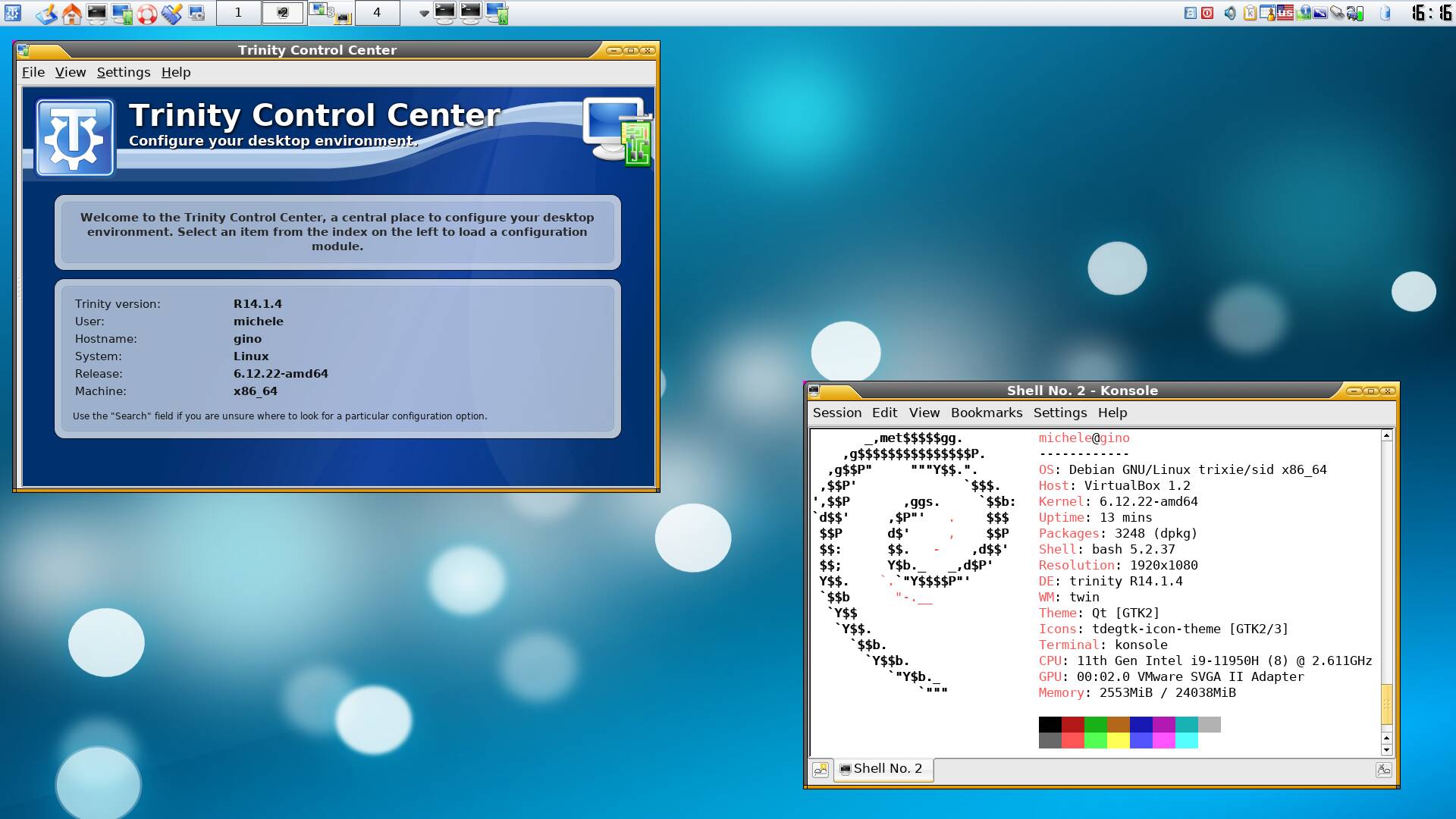How Prisma Transforms MongoDB Development (And Why You Need It)
MongoDB has been a popular database choice for JavaScript developers for years, thanks to its flexible document model and natural fit with JavaScript objects. While MongoDB's native driver and tools like Mongoose offer ways to work with the database, Prisma ORM provides a complementary approach that enhances the development experience. The MongoDB + Prisma combination MongoDB stores data in collections of JSON-like documents with flexible schemas. This flexibility enables rapid iteration and adaptability to changing requirements. Prisma ORM complements this flexibility by providing: Type-safe database access: Generated TypeScript types based on your schema. Clear schema management: A declarative schema that documents your data structure. Intuitive relationships: Elegant handling of relational connections both through embedding and referencing between collections. Optimized queries: Efficient MongoDB operations generated automatically. How Prisma works with MongoDB Unlike many ORMs designed primarily for relational databases, Prisma ORM also works with MongoDB's document-oriented structure while adding useful guardrails. If you'd rather watch, here's a video version: The schema definition With Prisma ORM, you define MongoDB collections and their structure using the Prisma Schema Language: // prisma/schema.prisma datasource db { provider = "mongodb" url = env("DATABASE_URL") } generator client { provider = "prisma-client-js" } model User { id String @id @default(auto()) @map("_id") @db.ObjectId email String @unique name String? posts Post[] createdAt DateTime @default(now()) updatedAt DateTime @updatedAt } model Post { id String @id @default(auto()) @map("_id") @db.ObjectId title String content String? published Boolean @default(false) author User @relation(fields: [authorId], references: [id]) authorId String @db.ObjectId createdAt DateTime @default(now()) updatedAt DateTime @updatedAt } MongoDB-specific considerations MongoDB lets you store data without fixed, rigid schemas, which is why many developers choose it. Prisma ORM complements this by providing a schema definition that gives your code type safety and structure, without restricting how MongoDB stores the actual documents. This approach combines MongoDB's document flexibility with code-level safeguards that validate your data and provide accurate TypeScript types. Working with ObjectIds MongoDB documents use an _id field that typically contains an ObjectId. Prisma ORM maps this identifier: id String @id @default(auto()) @map("_id") @db.ObjectId This mapping lets you work with the field as id in your code while Prisma ORM manages the transformation to MongoDB's _id field. Schema flexibility and evolution MongoDB's flexible schema works well for evolving applications. When using Prisma ORM with MongoDB, you can use several methods for schema evolution: Adding optional fields: New fields can be marked as optional (String?) to work with MongoDB's flexibility. Providing default values: Default values for new fields when needed. Using db push: Prisma ORM's db push command creates collections and indexes based on your schema, but doesn't modify existing document structures. npx prisma db push Modeling relationships MongoDB follows a simple principle: Data that is accessed together should be stored together. This approach leads to significant performance benefits by reducing the need for joins between collections. When using Prisma ORM with MongoDB, you have two main options for modeling relationships: Embedded documents Embedding should be the default approach in MongoDB. Prisma ORM supports this pattern using the type attribute, which directly stores related data within the parent document: model User { id String @id @default(auto()) @map("_id") @db.ObjectId name String address Address? // Embedded document } type Address { // Using type for embedded structure street String city String state String zipCode String } This pattern stores the Address data directly within the User document, which provides faster reads and writes for data that belongs together. When you query a user, you automatically get their address without additional database operations. References between collections While embedding is preferred, references between collections are useful for specific scenarios such as many-to-many relationships or when data is accessed independently: model User { id String @id @default(auto()) @map("_id") @db.ObjectId posts Post[] } model Post { id String @id @default(auto()) @map("_id") @db.ObjectId author User @relation(fields: [authorId], references: [id]) authorId String @db.ObjectId } The choice between embedding and referen

MongoDB has been a popular database choice for JavaScript developers for years, thanks to its flexible document model and natural fit with JavaScript objects. While MongoDB's native driver and tools like Mongoose offer ways to work with the database, Prisma ORM provides a complementary approach that enhances the development experience.
The MongoDB + Prisma combination
MongoDB stores data in collections of JSON-like documents with flexible schemas. This flexibility enables rapid iteration and adaptability to changing requirements. Prisma ORM complements this flexibility by providing:
- Type-safe database access: Generated TypeScript types based on your schema.
- Clear schema management: A declarative schema that documents your data structure.
- Intuitive relationships: Elegant handling of relational connections both through embedding and referencing between collections.
- Optimized queries: Efficient MongoDB operations generated automatically.
How Prisma works with MongoDB
Unlike many ORMs designed primarily for relational databases, Prisma ORM also works with MongoDB's document-oriented structure while adding useful guardrails.
If you'd rather watch, here's a video version:
The schema definition
With Prisma ORM, you define MongoDB collections and their structure using the Prisma Schema Language:
// prisma/schema.prisma
datasource db {
provider = "mongodb"
url = env("DATABASE_URL")
}
generator client {
provider = "prisma-client-js"
}
model User {
id String @id @default(auto()) @map("_id") @db.ObjectId
email String @unique
name String?
posts Post[]
createdAt DateTime @default(now())
updatedAt DateTime @updatedAt
}
model Post {
id String @id @default(auto()) @map("_id") @db.ObjectId
title String
content String?
published Boolean @default(false)
author User @relation(fields: [authorId], references: [id])
authorId String @db.ObjectId
createdAt DateTime @default(now())
updatedAt DateTime @updatedAt
}
MongoDB-specific considerations
MongoDB lets you store data without fixed, rigid schemas, which is why many developers choose it. Prisma ORM complements this by providing a schema definition that gives your code type safety and structure, without restricting how MongoDB stores the actual documents. This approach combines MongoDB's document flexibility with code-level safeguards that validate your data and provide accurate TypeScript types.
Working with ObjectIds
MongoDB documents use an _id field that typically contains an ObjectId. Prisma ORM maps this identifier:
id String @id @default(auto()) @map("_id") @db.ObjectId
This mapping lets you work with the field as id in your code while Prisma ORM manages the transformation to MongoDB's _id field.
Schema flexibility and evolution
MongoDB's flexible schema works well for evolving applications. When using Prisma ORM with MongoDB, you can use several methods for schema evolution:
-
Adding optional fields: New fields can be marked as optional (
String?) to work with MongoDB's flexibility. - Providing default values: Default values for new fields when needed.
-
Using db push: Prisma ORM's
db pushcommand creates collections and indexes based on your schema, but doesn't modify existing document structures.
npx prisma db push
Modeling relationships
MongoDB follows a simple principle: Data that is accessed together should be stored together. This approach leads to significant performance benefits by reducing the need for joins between collections. When using Prisma ORM with MongoDB, you have two main options for modeling relationships:
Embedded documents
Embedding should be the default approach in MongoDB. Prisma ORM supports this pattern using the type attribute, which directly stores related data within the parent document:
model User {
id String @id @default(auto()) @map("_id") @db.ObjectId
name String
address Address? // Embedded document
}
type Address { // Using type for embedded structure
street String
city String
state String
zipCode String
}
This pattern stores the Address data directly within the User document, which provides faster reads and writes for data that belongs together. When you query a user, you automatically get their address without additional database operations.
References between collections
While embedding is preferred, references between collections are useful for specific scenarios such as many-to-many relationships or when data is accessed independently:
model User {
id String @id @default(auto()) @map("_id") @db.ObjectId
posts Post[]
}
model Post {
id String @id @default(auto()) @map("_id") @db.ObjectId
author User @relation(fields: [authorId], references: [id])
authorId String @db.ObjectId
}
The choice between embedding and referencing depends on:
- Access patterns (how frequently you read the data together).
- Update frequency (how often the embedded data changes).
- Query patterns (how you query the data).
- Data size (how much data you're storing).
For most application scenarios, following MongoDB's principle of co-locating frequently accessed data through embedding leads to optimal performance.
Querying with type safety
Prisma ORM generates a type-safe client based on your schema, providing autocompletion and an improved developer experience:
// Finding posts with their authors
const postsWithAuthors = await prisma.post.findMany({
include: {
author: true
}
});
// TypeScript knows the shape of this data
console.log(postsWithAuthors[0].author.name);
Prisma Client works with MongoDB's powerful query capabilities, translating your Prisma ORM queries into optimized MongoDB operations while providing you with a type-safe, intuitive API.
Performance with Prisma Accelerate
For production applications, Prisma Accelerate offers performance advantages:
- Connection pooling: Improves MongoDB connections in serverless environments
- Edge caching: Reduces database load for frequent queries
- Global distribution: Decreases latency for users in different regions through edge caching
Prisma Accelerate provides two caching strategies:
- Time-to-Live (TTL): Cache data for a specified period
- Stale-While-Revalidate (SWR): Serve cached data immediately while refreshing in the background
// Example of using TTL caching with Prisma Accelerate
const users = await prisma.user.findMany({
cacheStrategy: {
swr: 120, // Serve stale data for up to 120 seconds while revalidating
ttl: 60, // Fresh for 60 seconds
tags: ["users_list"] // For cache invalidation
}
});
Practical considerations
When using Prisma ORM with MongoDB, these implementation details are important:
-
Prisma db push for MongoDB: MongoDB projects use
db pushfor schema changes as opposed toprisma migrate. - Replica set configuration: MongoDB replica sets are required due to the fact that Prisma ORM uses transactions to ensure data consistency. Transactions are not supported in MongoDB's single node deployments.
- MongoDB-specific types: Support for MongoDB's type system continues to develop.
- Null handling: MongoDB distinguishes between null and missing fields, which affects data modeling.
Getting started
Setting up Prisma ORM with MongoDB takes just a few steps:
- Install Prisma ORM in your project.
- Configure the MongoDB connection.
- Define your data model.
- Generate a Prisma Client.
- Use the client in your application.
For an in-depth guide on how to set up Prisma ORM with MongoDB, check out my complete walkthrough of building a full-stack app with Next.js + Prisma ORM + MongoDB.
When to use this combination
The Prisma ORM + MongoDB combination works well when:
- You need both schema flexibility and type safety.
- Your team prefers clear data modeling and documentation.
- You want to reduce boilerplate code.
- You're building with TypeScript.
- Performance and scalability matter for your application.
Give it a try!
Prisma ORM adds type safety, clear schema definitions, and practical relationship handling to MongoDB development while maintaining MongoDB's flexibility and performance characteristics. For teams building applications with MongoDB, Prisma ORM provides a productive development experience that works with MongoDB's features.
Want some more Prisma ORM + MongoDB tips and tricks?
Drop a comment below if you have any questions or feedback!
Say Hello! YouTube | Twitter | LinkedIn | Instagram | TikTok



































































































































































![[The AI Show Episode 145]: OpenAI Releases o3 and o4-mini, AI Is Causing “Quiet Layoffs,” Executive Order on Youth AI Education & GPT-4o’s Controversial Update](https://www.marketingaiinstitute.com/hubfs/ep%20145%20cover.png)















































































































































































































































































































































































![Google Home app fixes bug that repeatedly asked to ‘Set up Nest Cam features’ for Nest Hub Max [U]](https://i0.wp.com/9to5google.com/wp-content/uploads/sites/4/2022/08/youtube-premium-music-nest-hub-max.jpg?resize=1200%2C628&quality=82&strip=all&ssl=1)

























































![Epic Games Wins Major Victory as Apple is Ordered to Comply With App Store Anti-Steering Injunction [Updated]](https://images.macrumors.com/t/Z4nU2dRocDnr4NPvf-sGNedmPGA=/2250x/article-new/2022/01/iOS-App-Store-General-Feature-JoeBlue.jpg)




























































